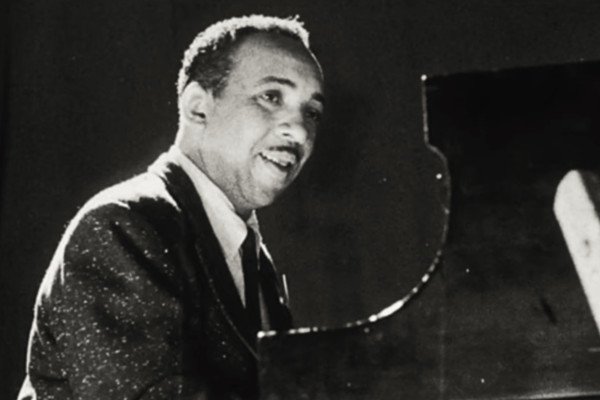Top 5 Red Garland Songs
William McKinley "Red" Garland Jr., an iconic figure in American modern jazz, left an indelible mark on the genre with his distinctive piano style. Known for popularizing the block chord technique and his work with the Miles Davis Quintet, Garland's contribution to jazz is immeasurable. In this blog post, we'll delve into five of Red Garland's timeless compositions that showcase his unparalleled artistry and enduring influence on the world of jazz.

- "Almost Like Being In Love"
Released in 1957 on the album "Red Garland's Piano," "Almost Like Being In Love" captivates listeners with its upbeat tempo and Garland's impeccable piano skills. The track, originally composed by Alan Jay Lerner and Frederick Loewe, receives a fresh interpretation by Garland, showcasing his ability to infuse classic tunes with his unique touch. The syncopated rhythms and joyful energy make this rendition a standout in Garland's extensive discography.
- "I Know Why (And So Do You)"
If you are interested in learning music check out our Music Lessons in Tempe.
A testament to Garland's versatility, "I Know Why (And So Do You)" is a jewel in his repertoire. This composition, co-written by Harry Warren and Mack Gordon, demonstrates Garland's ability to convey a deep emotional resonance through his piano playing. The delicate phrasing and nuanced dynamics elevate this piece, making it a memorable addition to any jazz aficionado's playlist.
- "Stormy Weather"
While not featured in your initial list, "Stormy Weather" deserves an honorable mention for its significance in showcasing Garland's emotive prowess. Originally written by Harold Arlen and Ted Koehler, Garland's interpretation on various occasions highlights his ability to navigate through the complexities of the composition, delivering a masterful performance that captures the essence of the title itself.
- "The Very Thought of You"
In the realm of romantic jazz ballads, "The Very Thought of You" stands out as one of Red Garland's most tender and emotive performances. Ray Noble's timeless composition receives an exquisite treatment from Garland's trio, featuring the pianist's signature block chord style. The melancholic yet beautiful rendition showcases Garland's ability to convey a profound emotional depth through his piano keys.
- "Please Send Me Someone To Love"
Closing our exploration of Red Garland's top songs is the soulful "Please Send Me Someone To Love." Originally penned by Percy Mayfield, this track takes on a new dimension under Garland's skillful interpretation. The extended runtime of nearly ten minutes allows Garland and his accompanying musicians to explore the depths of this poignant composition, creating an immersive and soul-stirring listening experience.
Red Garland's influence extends beyond his notable songs. His tenure with the Miles Davis Quintet, the block chord technique, and his later work as a bandleader and recording artist have left an enduring legacy. Garland's unique approach to jazz piano, characterized by his sophisticated accompaniment and chord voicings, continues to inspire generations of musicians.
Red Garland's musical journey, spanning from the 1940s to the 1980s, showcases not only his remarkable skill as a pianist but also his adaptability and evolution within the ever-changing landscape of jazz. Born in 1923 in Dallas, Texas, Garland's early experiences as a clarinetist and alto saxophonist laid the foundation for his later exploration of the piano.
His time in the United States Army exposed him to the piano, and under the guidance of Army pianists John Lewis and Lee Barnes, Garland honed his craft. Post-military life led him to New York, where he found opportunities playing with notable musicians like Hot Lips Page and Billy Eckstine. These experiences, coupled with his background as an amateur boxer, contributed to the unique amalgamation of influences that shaped Garland's distinctive style.
Garland's breakthrough came in 1954 when he joined the Miles Davis Quintet, a collaboration that would define an era in jazz. The Prestige albums recorded during this period, including "Miles: The New Miles Davis Quintet" and "Workin'," showcased Garland's prowess and distinctive chord voicings. Despite some critics labeling him as a "cocktail" pianist, Garland's contributions to these seminal recordings solidified his status as a key figure in the jazz scene.
The late 1950s marked a turning point for Garland, as he ventured into leading his own trio. Collaborating with a myriad of talented musicians, including John Coltrane, Donald Byrd, and Pepper Adams, Garland's trio became a platform for experimentation and innovation. His ability to adapt to changing musical landscapes is evident in the diverse array of musicians he worked with and the variety of recording sessions under his leadership.
The 1970s saw Garland's return to Texas to care for his mother, a period of introspection that culminated in the 1977 recording "Crossings." This album, featuring a reunion with Philly Joe Jones, reflected a more modern and less polished sound compared to his earlier works.
Red Garland's journey through time encapsulates not just a career in music but a profound influence on the evolution of jazz itself. His ability to seamlessly navigate through different eras, styles, and collaborations underscores the timeless nature of his artistry.
If you like this check out our article: Top Wynton Kelly Albums
